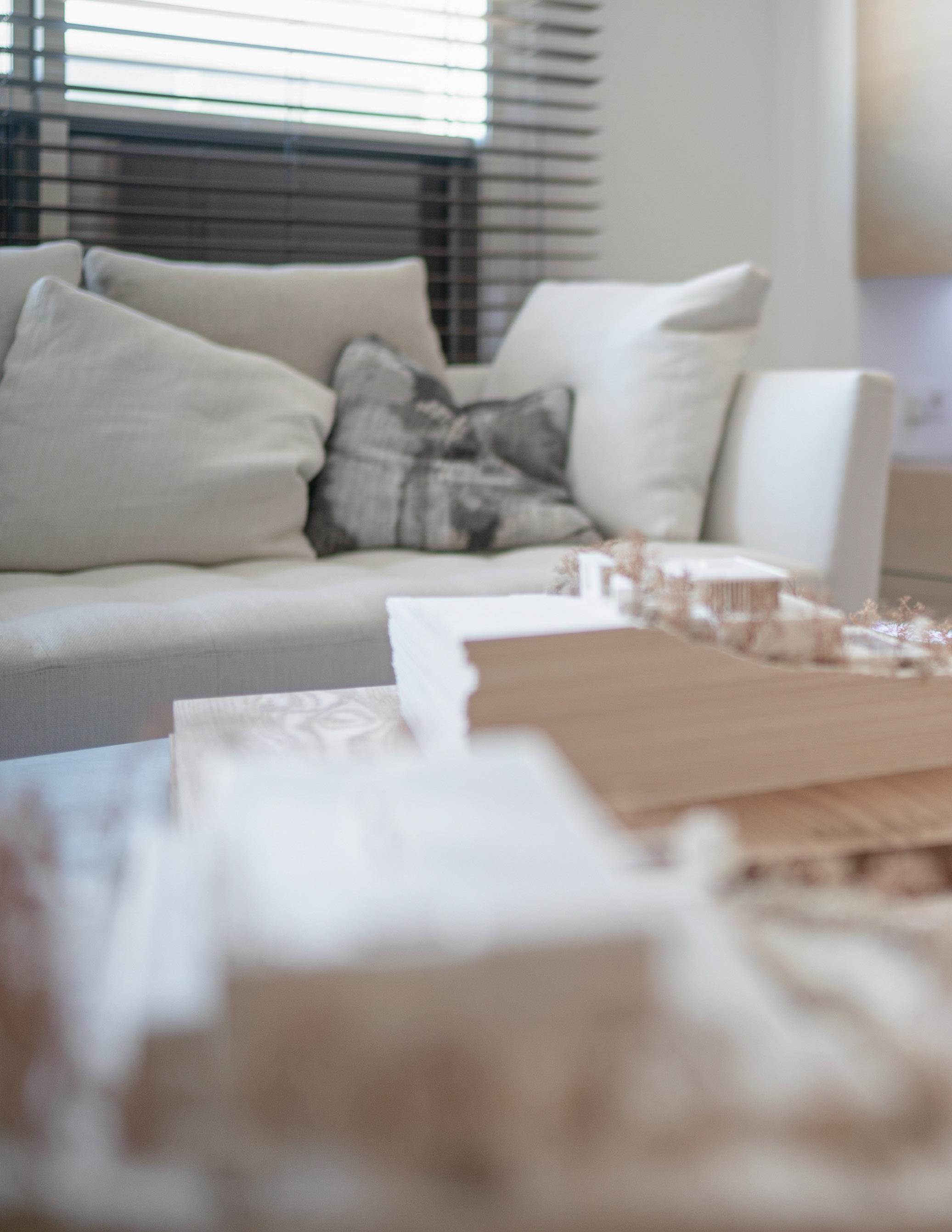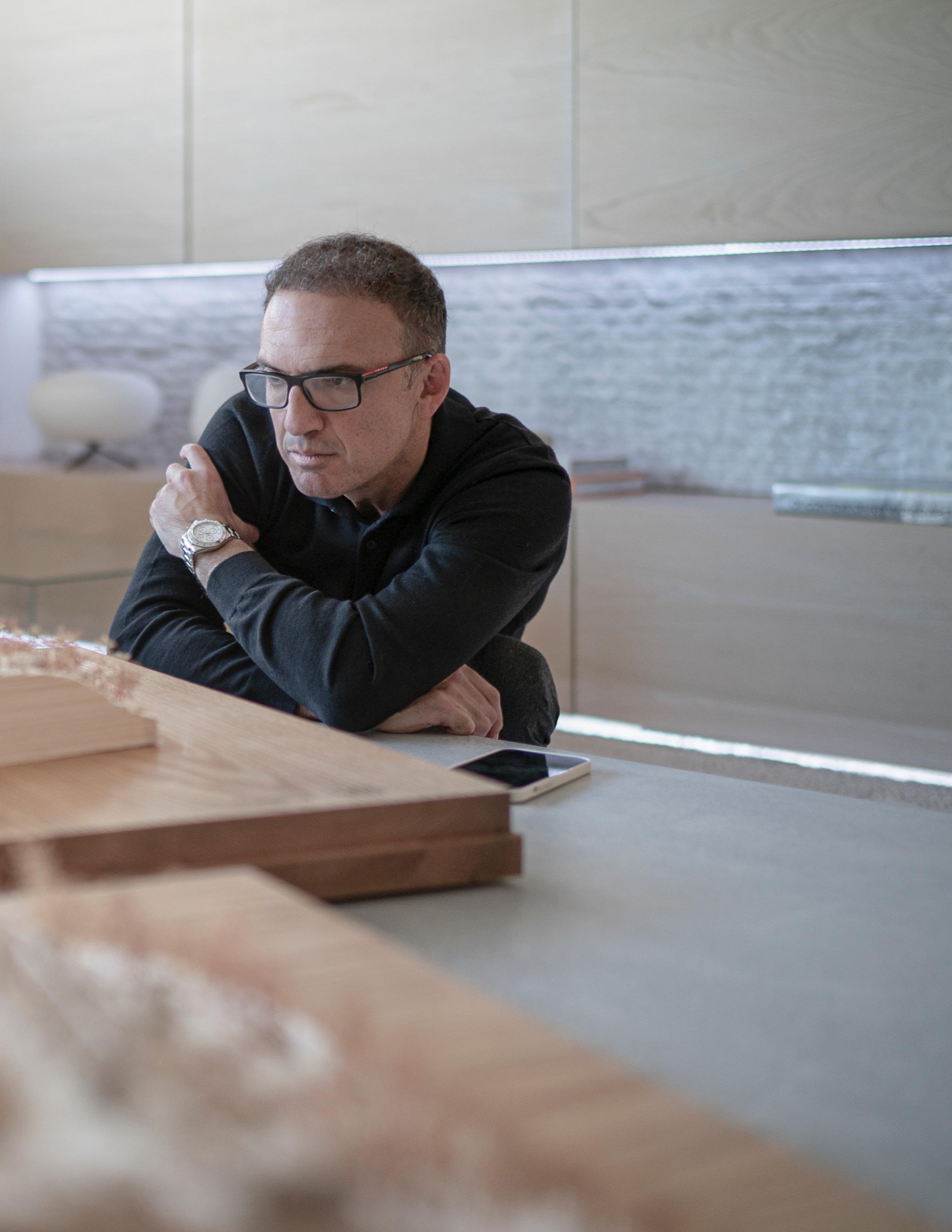
2 minute read
Manuel Moriche
CO-FOUNDER OF ARK ARCHITECTS
We try to create a beautiful journey from the initial sketches to the delivery of the end product for our clients.
Advertisement
Can you tell us about the beginnings of ARK and the inspiration behind its founding?
ARK was founded 25 years ago by three friends who shared a common goal of pursuing their passion for engineering and architecture. Since then, we have expanded our team to around 30 talented individuals. We have built a reputation for delivering high-quality work and established ourselves as a trusted partner in the industry.
How would you interpret your architectural style?
I believe that style is not the most important aspect to focus on in architecture. In my opinion, good architecture is defined by its ability to seamlessly integrate with its surroundings and meet the unique needs of its clients while also being well-constructed. If I had to describe my style, I would say that it combines classical and modern elements, resulting in a timeless aesthetic.
However, I must admit that I am not particularly fond of discussing style, as I believe that the focus should always be on creating functional, beautiful spaces that enhance the lives of those who use them.
Can you explain how ARK's business concept differs from traditional construction practices?
Our approach is grounded in the belief that buildings are not just beautiful ideas on paper but tangible structures that must be built with precision and care. That's why we established our own building company over two decades ago, to ensure that our designs were executed with the utmost attention to detail.
We understand that the construction process can be daunting for our clients, so we aim to provide them with a seamless experience by handling all aspects of the project under one umbrella. By doing so, we can be more efficient and precise in the building process, ultimately delivering a beautiful end result that exceeds our client's expectations. I believe this approach has helped make our company what it is today.
What is your opinion on the current state of Sotogrande's luxury real estate market? With new investors coming in and prices for homes reaching up to 20 million euros. Do you see this trend continuing in the future?
Sotogrande is like a hidden gem on the Costa del Sol. The market there has been changing over the years, and an investment six years ago increased demand for properties and resulted in a rise in property prices. For instance, a project we worked on, El Mirador, a gated community of six villas, sold for prices ranging from 15 to 16 million euros, demonstrating a drastic market shift.
Today, some Sotogrande clients receive offers for their houses of up to 20 million euros. Although Sotogrande has a distinct character compared to Marbella, it's worth keeping an eye on for the future.
How do architects create a sense of "home" in a building, regardless of its size? Why do you think it's important for clients to feel at home in their space, regardless of how large it may be?

At ARK, our process is all about collaboration from the very beginning. We work closely with architects, interior designers, lighting specialists, landscaping designers, and our clients. The client's input is crucial to us because, ultimately, we are building their dreams. We take pride in bringing their vision to life and creating a space that truly reflects their personality and style.
Could you explain the concept of neuroarchitecture and how it relates to ARK Architects?
At ARK, we believe that good architecture has a profound impact on individuals, which is why we're interested in the field of neuroarchitecture. This scientific approach allows us to measure how good architecture can affect the brain and body. Neuroarchitecture isn't just about testing people's responses to different buildings or spaces. It's about understanding how architecture can influence our thoughts, feelings, and behaviour. We don't conduct experiments where we attach sensors to people's heads; rather, we approach it as a part of our investigation into the power of architecture. We want to understand how the built environment can create specific sensations and emotions and how it can change people from the inside out.
You can watch Manuel Moriche's full interview here










